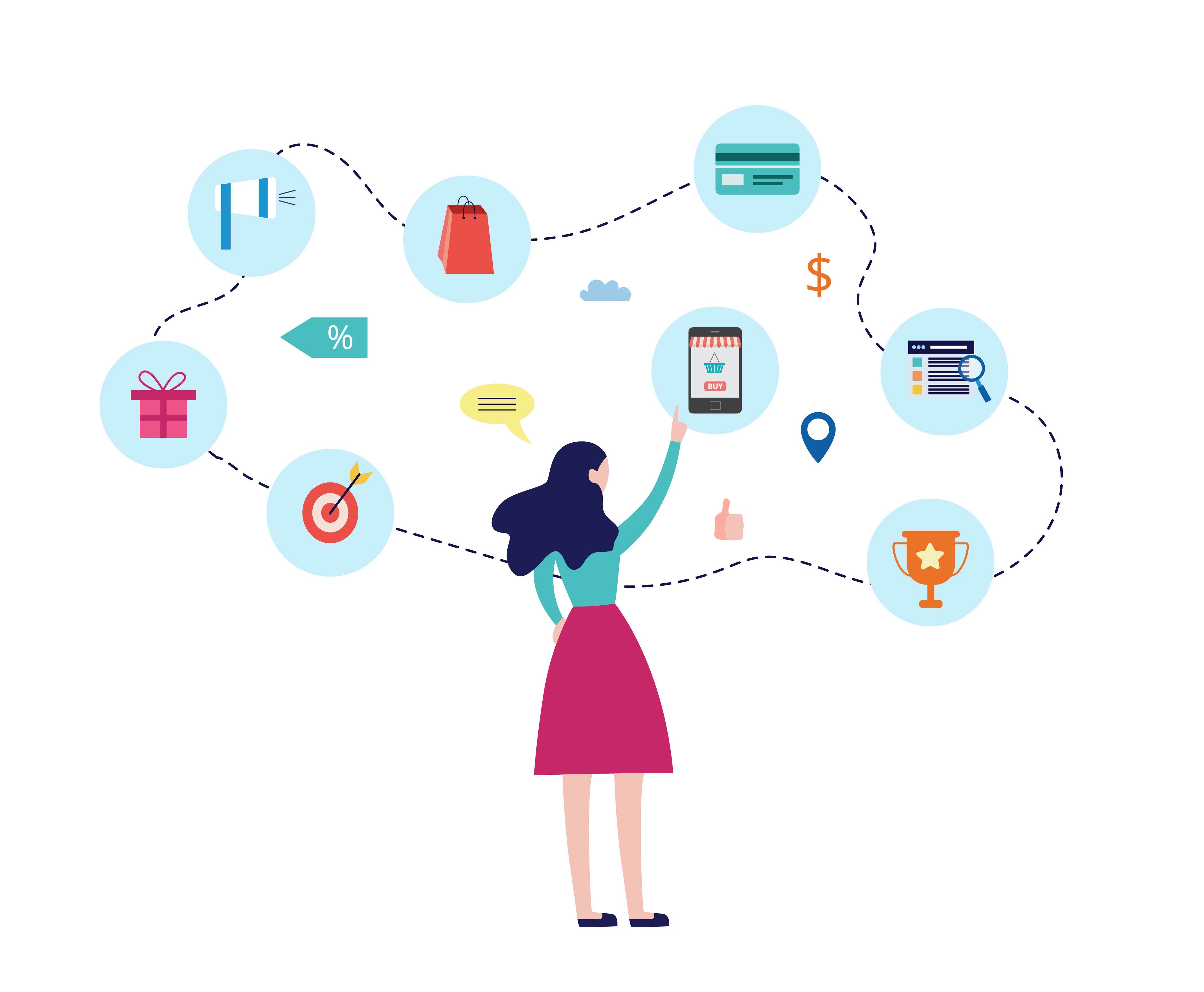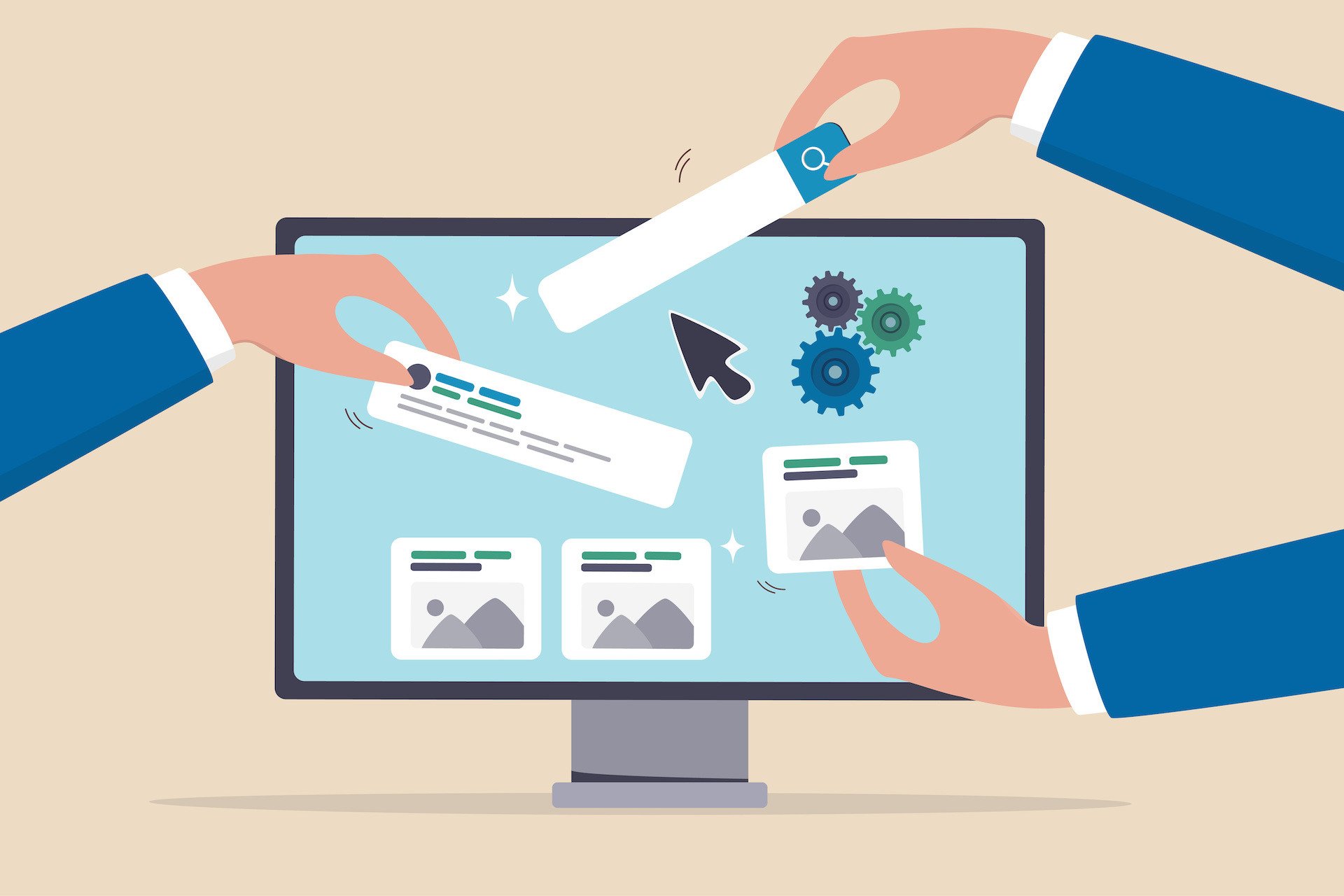8 Effective B2B eCommerce Strategies to Drive Sales and Conversions
Learn the eight B2B eCommerce strategies and tools you can use to propel your company towards success in the digital commerce marketplace.

A well-documented customer journey map can be your business’ compass, guiding you through the intricacies of B2B eCommerce transactions.
Not sure where to start when planning out the customer journey for your business? Here’s how to create a customer journey map that not only reflects the uniqueness of your business, but also enhances the overall customer experience for your brand.
Broadly speaking, the B2B eCommerce customer journey is the strategic series of interactions and touchpoints a business customer goes through from discovering a product or service to making a purchase. It's the roadmap that outlines the steps and stages involved in the decision-making process.
While both B2B and B2C eCommerce share similarities, they differ significantly in crucial aspects. When it comes to B2B, purchases are often larger, the decision-making process involves multiple stakeholders, and the sales cycle tends to be longer. Here's a quick breakdown of key differences:
Mapping the B2B eCommerce journey is not just a trend — it's a strategic necessity. Understanding your customer's journey helps you:
At a time when B2B eCommerce is more popular than ever — a Gartner survey found that 83% of B2B buyers prefer ordering or paying through digital commerce — having a clear journey mapped out to capture that demand is vital.
Related: Magento B2B Guide: Features, Pricing, and Examples
Unlike B2C, where journeys can be somewhat standardized, B2B journeys vary widely — and with 56% of B2B buyers expecting offers to be personalized, you need to pay special attention to tailoring journeys to each customer or customer segment.
Your industry, company, and audience contribute to a unique journey, making it essential to tailor your approach based on your specific circumstances.
While acknowledging the uniqueness of each journey, certain checkpoints are common in a B2B customer's path. The speed and significance of these checkpoints depend on the industry you operate in, company specifics, and customer characteristics. Here's a broad outline:
While the stages listed above are what we think of as the B2B eCommerce customer journey, many have a more simplified view of the path. It generally is broken down into the following steps:
Once you have some major steps laid out for your customer journey, here’s how you can begin to map it out. Remember, you want to remain focused on personalization for your customers that will encourage them to follow the journey and convert.
Start by defining detailed customer personas. Understand the roles, responsibilities, pain points, and goals of the individuals involved in the decision-making process. This step lays the foundation for a more personalized and effective customer journey map.
Pinpoint every possible touchpoint your customer may have with your business. This includes digital interactions — such as website visits and email communication — as well as offline touchpoints like conferences or sales meetings. Recognizing all touchpoints provides a comprehensive view of the customer journey.
Map out the key B2B customer journey stages and align them with your customer personas and touchpoints. Each stage should be clearly defined, indicating the actions and considerations at each point. Consider how the customer moves through these stages and where they may encounter challenges or opportunities.
Identify potential pain points within each stage of the customer journey. These could be obstacles, hesitations, or uncertainties that might hinder progress. Analyzing these pain points allows you to proactively address them, enhancing the overall experience and streamlining the journey.
Create mechanisms to gather feedback from your B2B customers at various stages of their journey — this could involve surveys, interviews, or data analytics. Use the collected feedback to refine and improve the customer journey map continuously. Feedback loops ensure your map remains dynamic and responsive to evolving customer needs.
A customer journey map is not a one-time task, but an ongoing process. Regularly revisit and update the map based on changes in customer behavior, industry trends, or alterations in your product and service offerings. Iteration is key to maintaining a relevant and effective B2B eCommerce customer journey map.
Read More: Comparing the 6 Top-Rated B2B eCommerce Platforms in 2023
With a meticulously crafted B2B eCommerce customer journey map, the real fun begins when you put it into action and adapt your marketing strategies, sales processes, and customer interactions based on the insights you gain from it. Be sure to continuously monitor and refine your eCommerce customer journey as your business evolves and customer expectations shift — being flexible is key for remaining ahead of the competition, especially since 90% of B2B buyers will go to a competitor if your digital channel fails to keep up with their needs.
By embracing the uniqueness of your B2B customer journey, you will position your eCommerce store for success in a competitive landscape.

Learn the eight B2B eCommerce strategies and tools you can use to propel your company towards success in the digital commerce marketplace.

This guide provides a high-level overview of B2B eCommerce for manufacturers, what it entails, why it's important, and how to get started with it.

Learn what B2B eCommerce customization entails, why it matters, and get actionable insights on how to begin customizing your site.